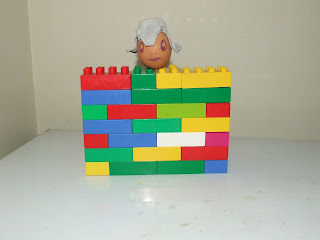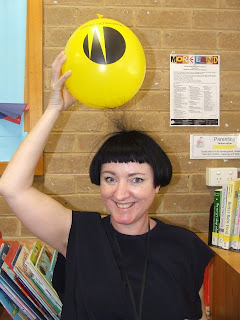Lots of things happened around my library service. Fireman came to read the story and bought along their helmets, staff wore hats of all types for the occasion, children were encouraged to bring a hat.
I performed a little drama where I was continually being called my another librarian that the children knew, who was inviting me different places and I had to dress appropriately, at least in terms of my head wear. In the one-woman-play I was invited along to a safari, the beach, to see my friends new house, to help do her washing, to visit a castle, to a halloween party and to rescue her son from pirates each time I adorned a different hat in preparation only to have my librarian friend phoning my to change her mind all the time.
Science Experiment:
This week I linked my science exploration to hats that protect and who needed more protection than Humpty Dumpty as he sat on his wall.Would Humpty have needed to be put back together again if he was wearing a hat or helmet of some kind?
We looked at a bicycle helmet and talked about the different parts. A bike helmet is made up of two parts a hard outershell and a soft inner lining. The hard part is to spread the force of the impact over a larger area so that your head doesn't break. The softer part squeezes in when you hit your head and absorbs the impact energy so that there is less impact going to your head.
We made a helmet for Humpty using using an egg carton helmet that was padded with a bit of foam so we had a hard layer and a soft layer just like the bike helmet.
The pictures tell the story of what happened.
With a helmet:
Humpty Dumpty sat on the wall
Humpty Dumpty had a great fall
All the Kings men, they shouted "Hooray"
"Humpty was wearing a helmet today"
Without a helmet:
Craft Ideas:
Lots of ideas on the NSS websiteMake a newspaper hat.



















